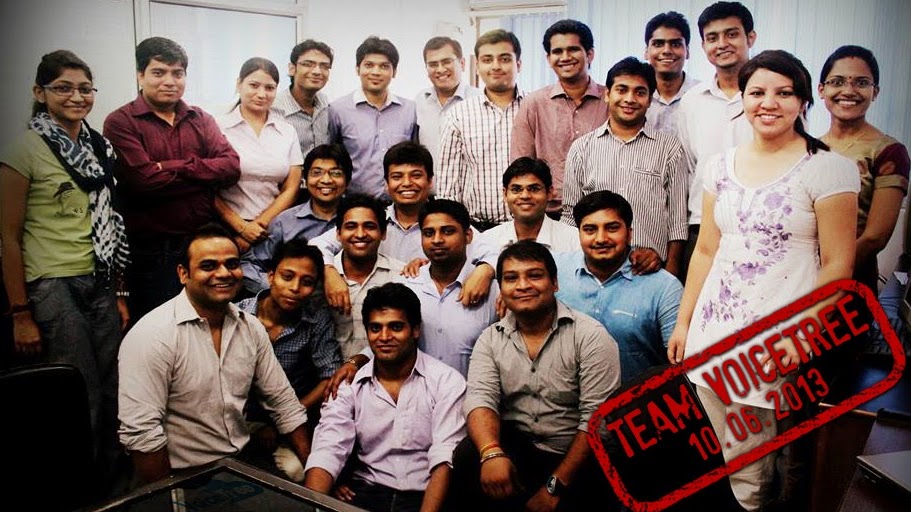The toughest challenge in your startup journey is getting to the milestone of first 100 customers. iSPIRT’s 97th PlayBook RoundTable, ‘Zero to One’ was held last Saturday in the hot and humid city of Chennai.
Ankit Oberoi from AdPushUp moderated the RoundTable which was attended by 13 other startup founders eager to know how to crack this. The PlayBook didn’t have formal presentations but rather involved everyone into an engaging conversation that was both informal as well as informative.
First things first, as early stage SaaS startups, “Kneel down and build your product well, when bootstrapped” was Ankit’s advice.
Identifying Target Customers
Emphasis was made on identifying your target customers to help you build the right inbound and outbound strategies. Ankit mentioned that a good way to find your target customer type is to look at your top ten customers. Few entrepreneurs looking to generate quick revenue might tend to drift towards a service model.

Arvind Parthiban, CEO of Zarget had an insight on this trend — “Going the service way will work only if one can scale up right and maintain profitability in the longer run”.
Inbound Marketing Tactics
A majority of the discussion was about inbound procedures. 3 simple things should make up your Content Marketing strategy –
- Identifying your target persona
- Creating quality content
- Setting up distribution channels
Just creating content will not cut it! You need to market it right to do justice to its quality.
Though it is a painfully long process, bootstrapped startups have the luxury of time and they should invest in building on content strategies around long tail keywords. Much emphasis was given as to why content should be created for personas. An example that was pointed out for this was Groove’s blog where the focus is exclusively on founders.
It is right for early-stage startups to focus on generating traffic through content but the real focus should be on giving value to the readers. Conversions can happen even later and not necessarily while reading your content. Growing a subscription list through your blog is not only a no-brainer, but a must have item in your growth stack .
Ankit stressed on how Neil Patel talks about why you need to urge your readers to subscribe right from the start. When you have a subscribers list, you can nurture them to share your content and build a bigger subscribers list which will ultimately increase your brand value and improve your customer base. Initial days of your startup journey are when you can do such things that take time to scale.

Intent Defines Inbound
Categorize your efforts based on intent when you are going all out on inbound marketing. Content writing has to be segregated widely into two types –
- Buyer Intent
- Value Intent
Buyer intent content are the ones written with the focus on ranking higher on search engines. These should have focus on keywords and the main objective of these content pieces are to sell your product.
Value intent is when you become a Thought Leader of the industry you are in. Helping your customer persona should be the name of the game when you generate such content. At times, you don’t even have to put a link back to your product when you write such content. Educative long form content with simple writing works best.
Just like content writing, content distribution too has to be categorized based on intent.
- SEO intent — You share the article/blog with search engine ranking in mind
- Sharing intent — You find avenues where people are bound to share the post more
- Distribution intent — Sharing in one place that sets off a chain of shares
Be spot on with your content!
Creating a content calendar is a must! Knowledge sharing on this topic pointed out that the calendar should be finalized, ideally, in the first few days of the month. Decide on buyer intent topics with the help of keyword planners. Thought leader articles can be written with the help of community platforms — find answers for the most-asked questions. Quora is a gold mine to search for blog ideas.
The consensus from the more experienced entrepreneurs at the RoundTable was that content has to be tested too. The headline is the most important bit of your article/blog. Ankit spoke about how 75% of your readers don’t actually read your content but rather scan for information. He shared a personal insight on how just a headline change helped AdPushUp make an article go viral overnight! Check out this article here.
As much as headlines, the first few lines matter too! In fact, most people who share an article actually read the intro and then skim through the article. Sharing happens not because people read it fully but because they feel it is relatable to something they would read and want to express to their circles about the type of content they would read. Your formatting should be spot on to help them digest your post in just a few seconds!
Headlines need to be tested extensively. Vengat from Klenty stressed on how testing one variable at a time is imperative for success. Ankit talked about how he narrows it down from a couple dozen headlines for their blogs. A/B test between the best ones to ensure you get the best variation.
Types of articles to try…
The Zero to One #PlayBookRT stressed on a few interesting article types startups should try –
- Summarizing Comprehensive Blogs — Found something useful? Write a brief, original summary of the blog. This will rank organically. Ensure author credits are given.
- Roundups — Take a pick of useful tips, quotes, tools etc., and do a roundup. Reach out to the people/products/companies you mentioned and they will share it to their followers
- Skyscraper Technique — Find an awesome content and piggyback on it. Find linkable assets, make it better by adding in your thoughts or collating ideas. Reach out to the authors of the post and share it on social media.
While on the topic of Content Marketing, the topic of paid promotions came into play and it was agreed upon that paid promotion for articles should be done with the intent only to hit a critical mass. With paid promotions, readership is not improved but only the views are artificially increased. A good insight from one of the attendees was to try and push notifications about blogs through live chat platforms like Intercom.

Hiring your inbound team
There are two types of talent you need on your inbound team for achieving success in your content marketing endeavours. The hustlers & the experts. Hustlers are those who understand the market and the distribution channels while the experts should be the ones strong in content.
AIESEC is one hiring venue that you should consider for smart and affordable talent.
You need to break down your web analytics — group traffic sources and optimize for each and every source. Ankit explained how Google not only ranks posts but also pulls down posts with the help of Ryan Fishkin’s social experiment. He urged people to open a top ranked post and immediately go back to the search results page. The search engine bots picked this up and realized people no longer find the post valuable and dropped it by one position!
We live in a smart world! And to outsmart Search Engines, you need smarter content tactics.
Quick look at a few other learnings
- Arvind and Ankit then shared their experiences with events generating brand value and how that indirectly helps your inbound conversions.
- PR is yet another way of getting social approval. It reduces sales cycle as well as helps with search engine rankings.
- Vengat shared his learnings from Prodpad’s gamification for trial users that kept urging for additional actions for trial extension. This would inevitably lead to more activation.
- There was a brief session on PPC campaign optimization and how Google’s Quality Score is important
Out-take on Outbound
Ankit stressed on the fact that if a startup concentrates well on inbound tactics and is all set for the long run, outbound becomes considerably easier. Most US companies go all out on inbound tactics. Being in India, we have the luxury to work on outbound marketing at relatively cheap costs.
Tools like BuiltWith, Datanyze, SimilarWeb are in this space. The problem to be addressed would be scaling the process without expanding the existing team. As you reach out to more and more people, the data bulk can be huge to handle if you don’t automate/semi-automate the process.
An entrepreneur’s journey is one to be cherished and the initial acceleration from 0–100 customers is enjoyable though dotted with challenges. The 97th Product Nation PlayBook RoundTable turned out to be a learning experience for everyone who attended and hope this article threw light on what was discussed to those who weren’t lucky enough to be part of it.
Never miss an iSPIRT event again — stay tuned to this page for updates on upcoming Product Nation events. Guest blog post by Kingston David, Zarget




